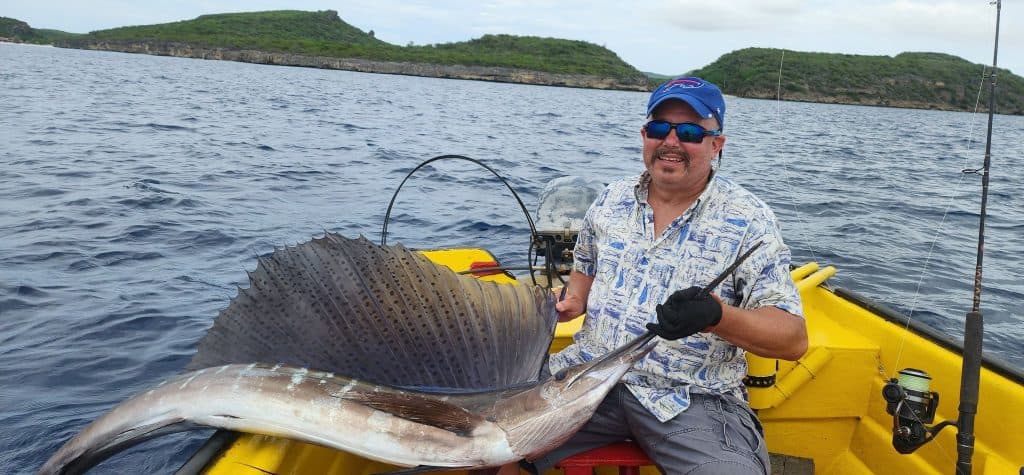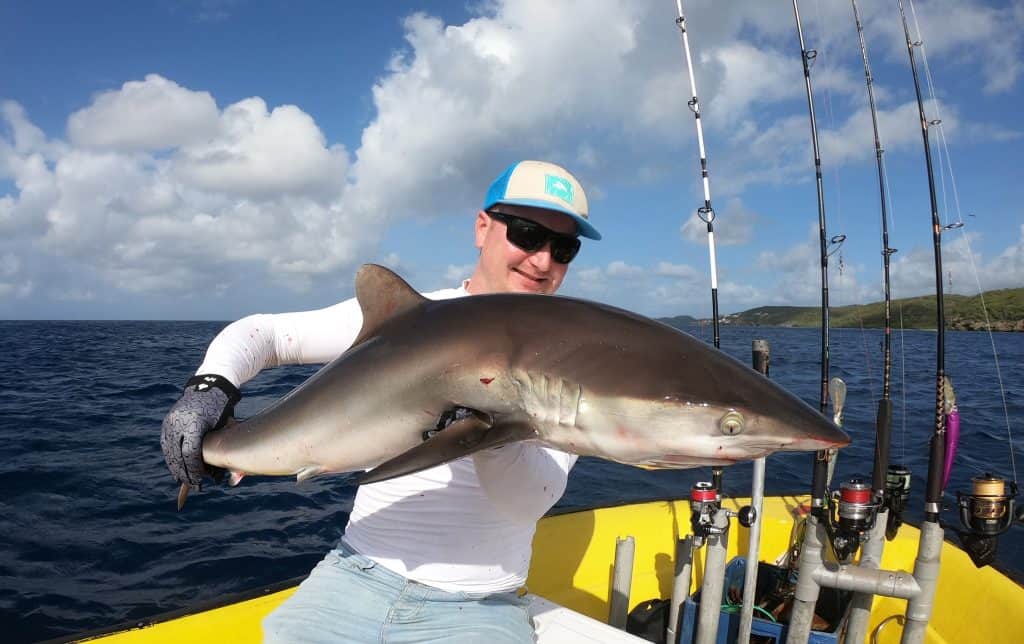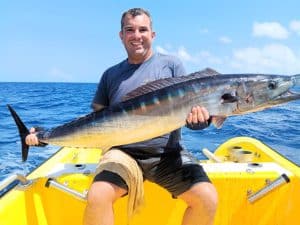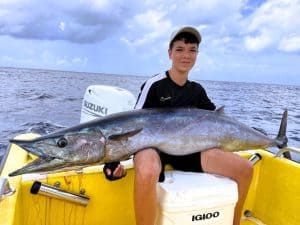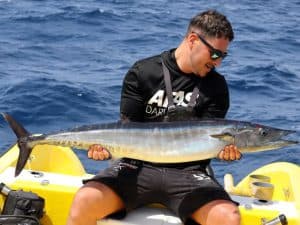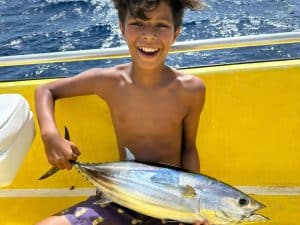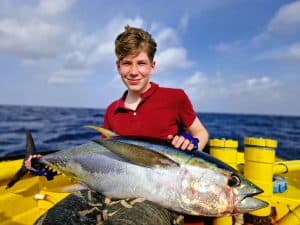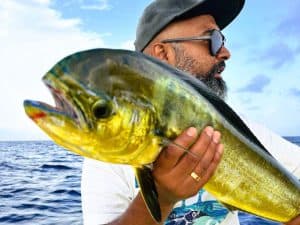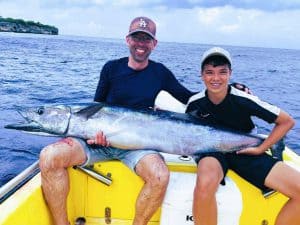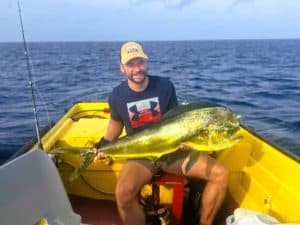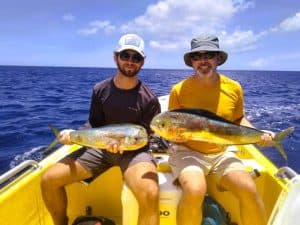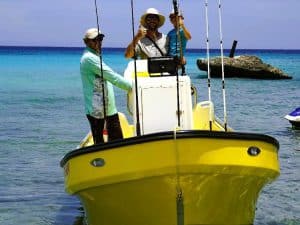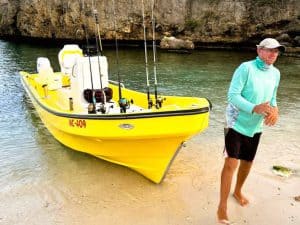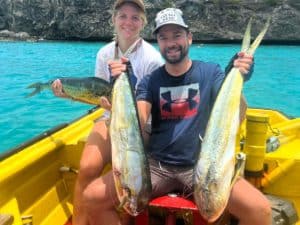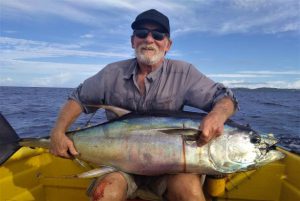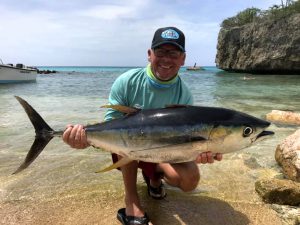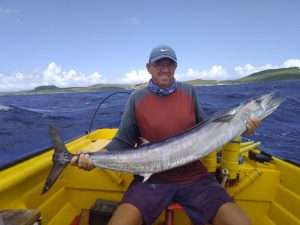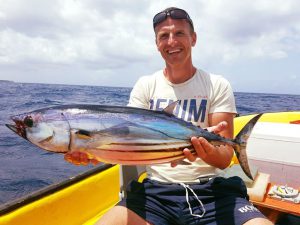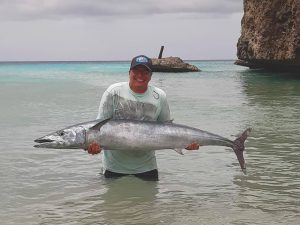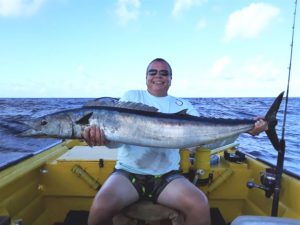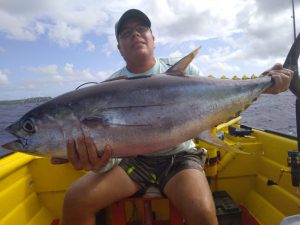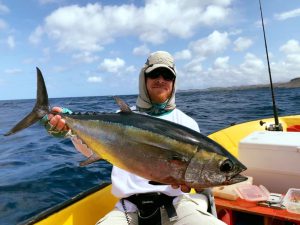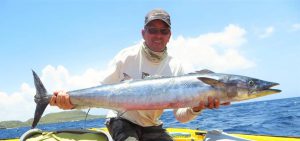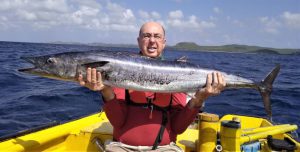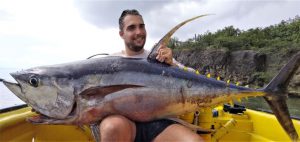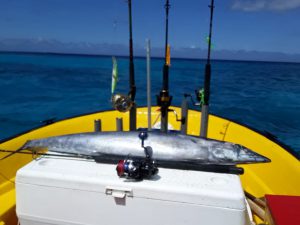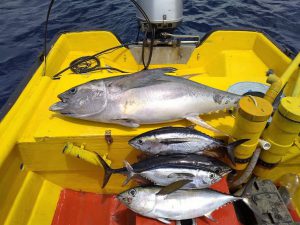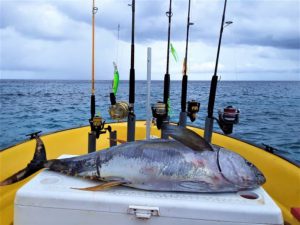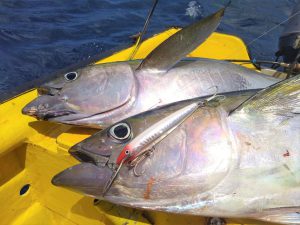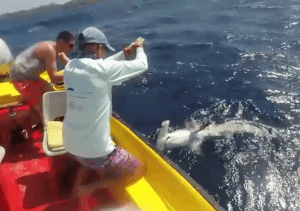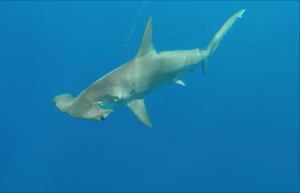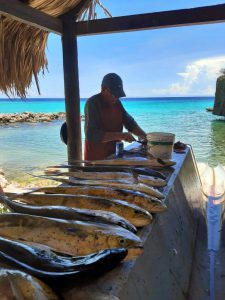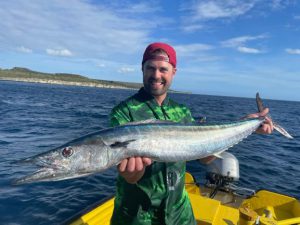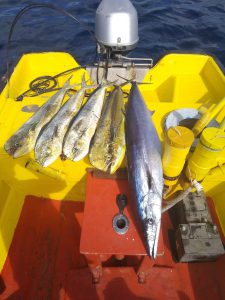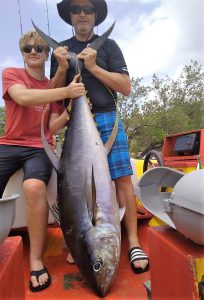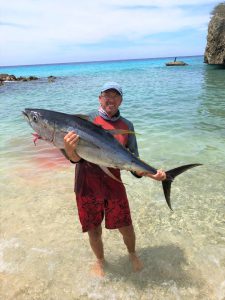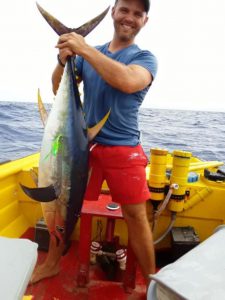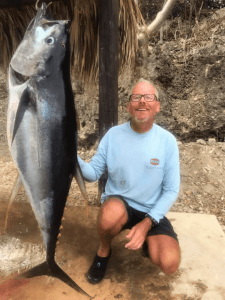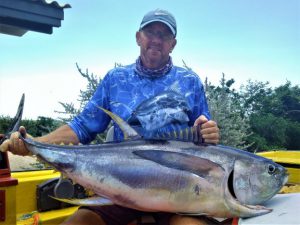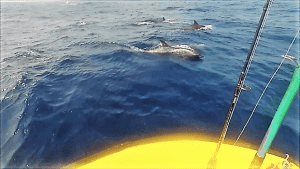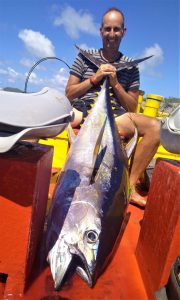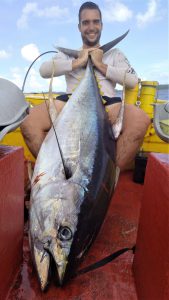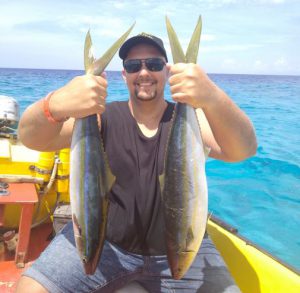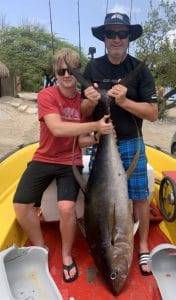Fishing Techniques
Seasonal variations, sea conditions, and targeted fish dictate our fishing methods. Our primary techniques include trolling, chumming, and live bait fishing. However, given favorable conditions, we’re also open to jigging.
Trolling
This is a conventional method involving deploying lines from the boat and trailing them behind as we move.
Typically, we kick off our day by trolling with lures, primarily targeting smaller tuna that we’ll later use for live bait fishing. Additionally, we provide trolling, equipped with perfectly rigged bait, ideal for locating and capturing wahoo.
Live Bait
Live bait fishing is widely recognized as the most exhilarating and effective method for reeling in yellowfin tuna, and it’s my preferred strategy when pursuing the giants of the sea. My mantra is ‘Catch a big one with a small one.’ To maintain the bait at its best, I’ve integrated custom-designed tuna tubes onboard.
Chumming
When the sea conditions are favorable, particularly during the summer months, we often opt for chumming to lure more fish to our vessel. We utilize fresh, finely cut bait that is scattered into the sea. It’s important to note that chumming is permitted in Curacao.
Our main targets
Wahoo
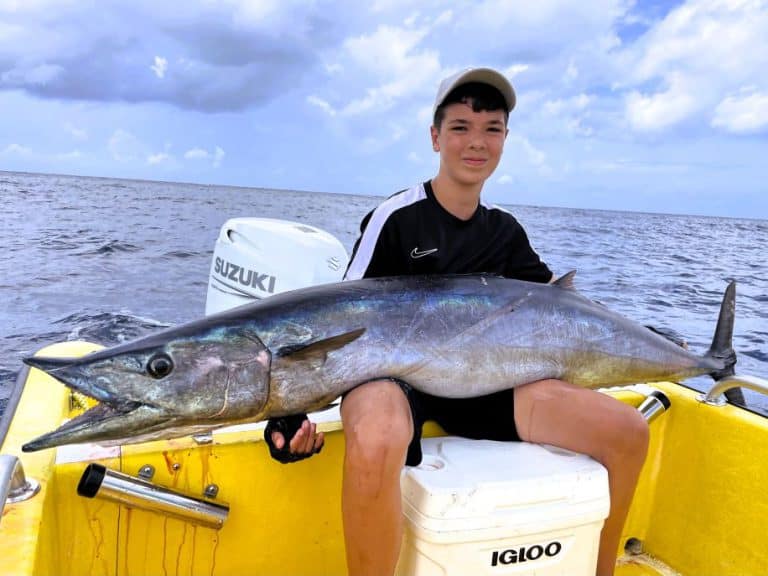
Wahoo, a sought-after sport fish, poses a challenge to track and entice due to its swift, continuous swimming. Engaging in a battle with wahoo is quite exhilarating. Typically, we target wahoo during the winter months when the water temperature tends to be cooler.
Tuna
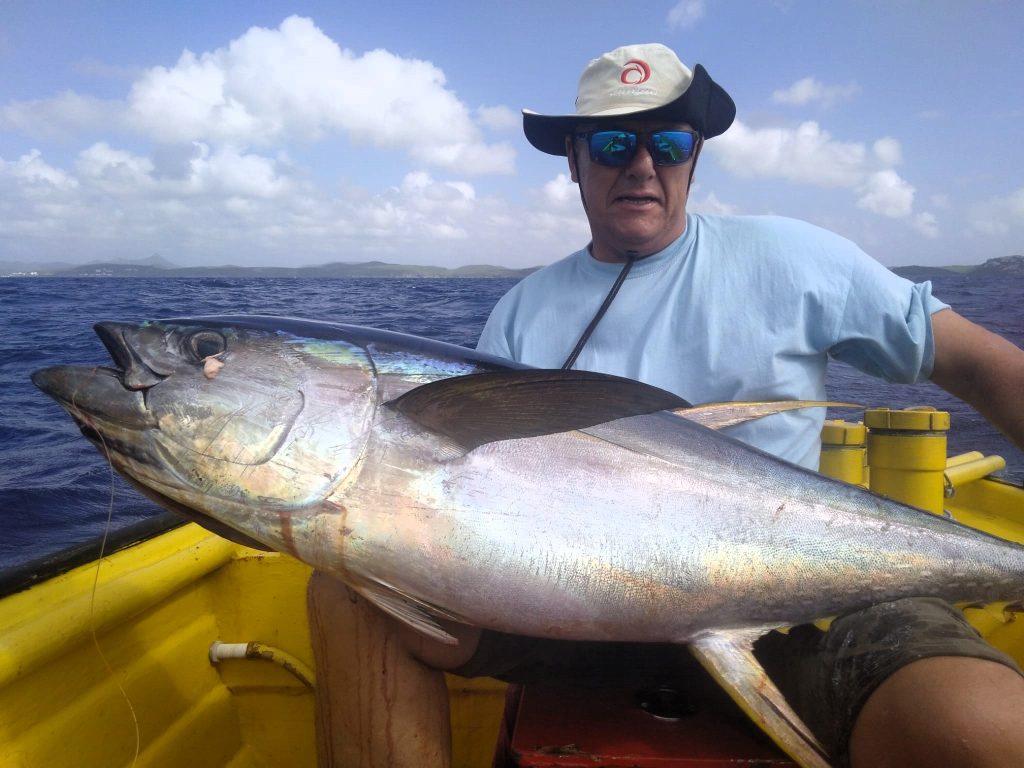
In the waters surrounding Curacao, you’ll find a variety of tuna species, including yellowfin tuna, blackfin tuna, bigeye tuna, and skipjack. Celebrated for their delectable flavor and impressive fighting capabilities, these tuna varieties offer an exhilarating angling experience.
Our main targets 2
Mahi Mahi or Dorado.
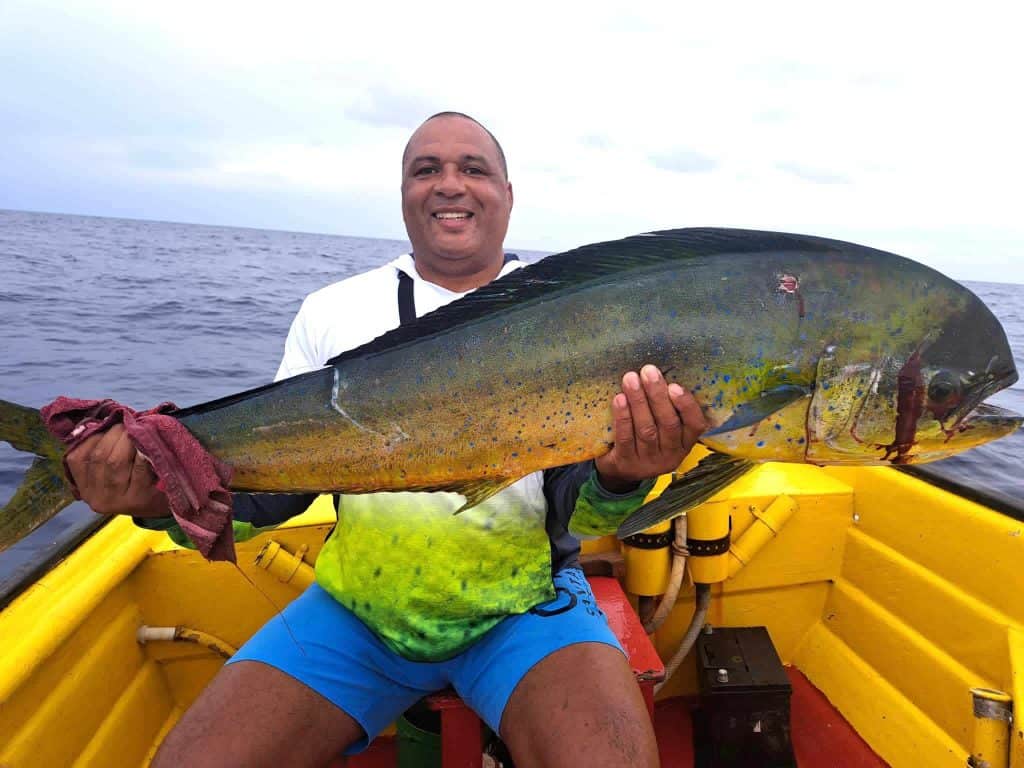
Mahi-mahi, also known as dorado or dolphin fish, is a migratory schooling species typically found in the blue waters and open ocean. They often grace the waters of Curaçao during the summer months. Mahi-mahi are renowned for their speed, agility, and vibrant, eye-catching colors.
Marlin, sailfish, barracuda, lemon shark, hammerhead shark etc
